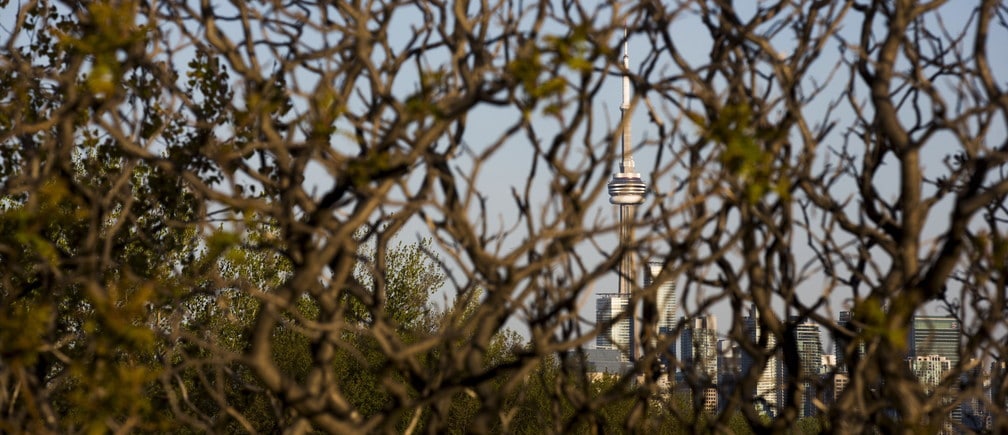Greener, healthier, more sustainable: why cities of the future need more biodiversity

Biodiversity is an indicator of an ecosystem's health. By improving biodiversity, we can improve the health of an ecosystem's residents. Image: REUTERS/Mark Blinch

Get involved with our crowdsourced digital platform to deliver impact at scale
Stay up to date:
Cities and Urbanization
Modern science has proven environmental factors heavily influence human health – which is why each and every one of us would benefit from an intact ecosphere with good quality air, water and produce. In fact, by changing the conditions in which we live, we might be able to improve our health and reduce costs for healthcare systems.
And since biodiversity is a reasonable indicator of the overall health of an ecosystem, we should try to optimize it. In consequence we might improve the health of the inhabitants and liveability of urban environments.
Ecologists bemoan the fact that urban environments are often left out of biodiversity studies – and that urban environments lack true biodiversity, period, due to the lack of spaces undisturbed by humans, the lack of corridors between green patches and the overall level of pollution.
How can cities of the future transform themselves to be more sustainable, healthier and biodiverse? Here are a few ideas.
The goal of cities of the future should be to create a variety of undisturbed land-based and aquatic biotopes within urban environments, connected by corridors for animals to migrate and for seeds to spread. Green roofs, conventional parks, private gardens and green facades could create additional space for animals and plants to thrive.
Toronto is one example of a city that adapted development regulations according to this model, by passing the Green Roof Bylaw, which requires a certain ratio of green roofing for new developments above a certain size.
Toronto also offers subsidies for building owners willing to create green roofs with their Eco-Roof Incentive Program, something other cities should mimic; and some already do. While not all municipalities can create a costly incentive program like Toronto, they could, for example, reduce the mowing of public grasslands, sidewalks and other areas, which would improve living conditions for bees and other species. An even eco-friendlier policy might be to use animals for grazing these grasslands, providing natural fertilization and means of local food production. In Munich, one of Germany’s largest cities, a flock of sheep is using Englischer Garten, one of the largest urban public parks, as pasture, which could be model for other public parks.

Municipalities could also declare a certain part of their forests as protected areas or plant biodiverse forests with native trees, creating new biotopes. The same should be considered for certain ponds, lakes and creeks that should be situated in a perimeter prohibiting conventional agriculture, fostering eutrophication of close-by aquatic environments.
Such environmental strategies for future city development should be embedded into a strategic report accessible by all city stakeholders, providing explanations, guidelines and contact information for further help. One model for other cities is Vancouver, which is currently implementing its Greenest City Action Plan, comprised of local food production, strategic tree planting in public and private spaces, improving microclimate, food security and biodiversity. Governments could provide additional incentives, like free access to endemic seeds via community seedbanks, garden design assistance and subsidies or property tax reductions for those making positive contributions to the environment on their private propery.
Technology is key to quantifying biodiversity and understanding the evolution of urban ecosystems. Drone overflights feeding data into a wildlife-recognition model combined with geotagging could help us understand the evolution of the urban ecosystem. Sensors could analyse soil humidity, temperature and composition and monitor wildlife, informing strategic planning.
All cities should join together to create an open database so researchers across the globe can access data and provide insights to local communities. Based on this knowledge, cities could enhance their urban farming and gardening programs, increasing local organic food production and further improving the health of inhabitants. Such community food gardens also educate and inspire more sustainable behavior while providing many other benefits.
How is the World Economic Forum supporting the development of cities and communities globally?
A future city might be smart in its use of technology, but would still be dumb if it does not provide a livable environment for its inhabitants and if it harms the ecosystem in which it’s built. Political decision-makers of opposing parties should not try to block each other’s’ projects but should fund projects that will ultimately make their cities more livable and sustainable and make their inhabitants healthier, happier and more connected to nature. And being more connected to nature also means city dwellers would need to adapt to more diverse ecosystems – such as more insects while sitting on the balcony, a raccoon digging through the trash or wild plants growing in one’s garden.
So, the idea of the future city should be broadened – not just a smart city, but first and foremost a sustainable city, that’s inhabitant-centric and working to minimize its environmental impact.
Don't miss any update on this topic
Create a free account and access your personalized content collection with our latest publications and analyses.
License and Republishing
World Economic Forum articles may be republished in accordance with the Creative Commons Attribution-NonCommercial-NoDerivatives 4.0 International Public License, and in accordance with our Terms of Use.
The views expressed in this article are those of the author alone and not the World Economic Forum.
Related topics:
The Agenda Weekly
A weekly update of the most important issues driving the global agenda
You can unsubscribe at any time using the link in our emails. For more details, review our privacy policy.
More on Cities and UrbanizationSee all
Victoria Masterson
April 17, 2024
Victoria Masterson
April 12, 2024
Victoria Masterson
April 11, 2024
Sam Markey and Andrew Watkins
April 5, 2024
H. Kit Miyamoto, Olivia Nielsen, Ommid Saberi and Guido Licciardi
March 27, 2024
Victoria Masterson
March 26, 2024






